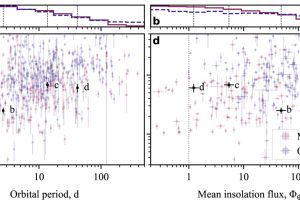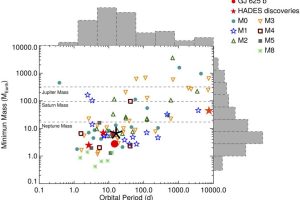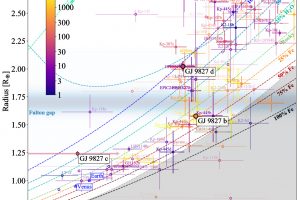A system of super-Earth exoplanets orbiting around GJ 3998 described in the paper: “HADES RV Programme with HARPS-N at TNG XVI. A super-Earth in the habitable zone of the GJ 3998 multi-planet system” of A. K. Stefanov (IAC)

At just 60 light-years away from us, the M-type star GJ 3998 hosts a system of three super-Earths, discovered and studied thanks to observations from the Telescopio Nazionale Galileo. M-type stars are among the most important targets in the search for exoplanets, primarily for two reasons: they are the most numerous stars in our Galaxy, and the most commonly
» Read more

